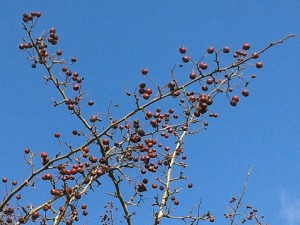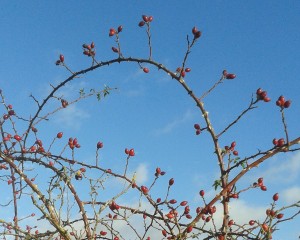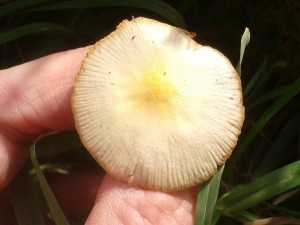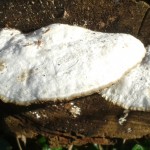

No wisecracks about Hips and Haws and keeping warm on chilly winter days! This morning it was actually more autumnal than wintery, with bright blue skies setting off the deeply red berries, the rosehips scarlet, the hawthorn berries crimson.
The birdlife however did give a hint of winter to come. The first half-dozen Redwings squawked softly and burst from the bushes in their peculiar way, twisting suddenly in flight to get out from between the branches, flapping noisily as they accelerate out of cover. A single big Mistle Thrush flew from higher up in a different tree.
A flock of Goldfinches, some Dunnocks, a Robin or two, a Blackbird, eight Magpies, a rapid Ring-Necked Parakeet, a Carrion Crow or two, and a few Black-Headed Gulls appeared here and there. A Sparrowhawk searched over the Poplar trees for unwary prey.
Down on the lake, too, the winter ducks are starting to arrive. There are good numbers of Gadwall (maybe 30) and Wigeon (50 or so) as well as Tufted (50) and Shoveler (100). A dozen Cormorants, a hundred Coots, a few Mallard, a couple of Mute Swans (where did they all go?), a few Canada Geese (ditto), and a solitary Great Crested Grebe made up the rest.

As a final treat, there was a slender, delicate stalk of the Yellow Inkcap, Coprinus auricomus, in the grass.

